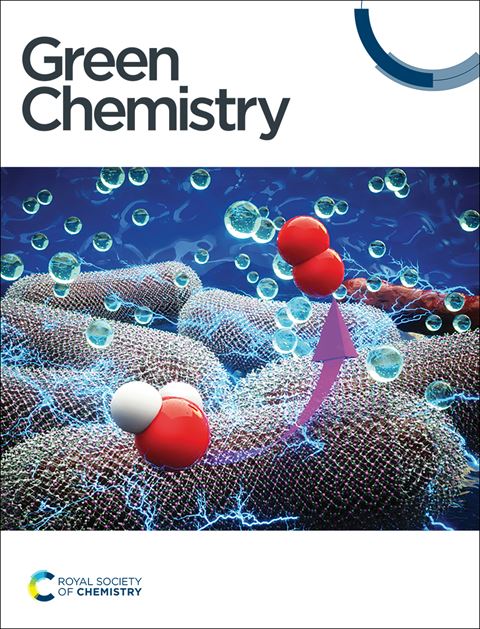Perovskite oxynitrides for plasma-driven ammonia synthesis: unlocking the potential of lattice nitrogen under mild conditions†
IF 9.3
1区 化学
Q1 CHEMISTRY, MULTIDISCIPLINARY
引用次数: 0
Abstract
Plasma ammonia synthesis driven by renewable electrical energy has the advantage of being cleaner and more distributed than the traditional Haber–Bosch process, which offers greater flexibility in material selection and process innovation for nitrogen fixation due to the unique catalytic environment. Inspired by the classical Mars and Van Krevelen (MvK) mechanism, we present a plasma-assisted lattice nitrogen ammonia synthesis strategy based on oxynitride perovskites, which improves the efficiency of utilizing plasma-excited species. It enables separated plasma hydrogenation and lattice nitrogen replenishment processes, achieving the highest rate (7087 μmol gcat−1 h−1) of plasma ammonia synthesis to date. This strategy greatly extends the application range of the plasma tandem ammonia synthesis process and provides new ideas for the design of plasma-catalyzed conversion systems.
钙钛矿氧氮化物用于等离子体驱动的氨合成:在温和条件下释放晶格氮的潜力
与传统的Haber-Bosch工艺相比,由可再生电能驱动的血浆氨合成具有更清洁和更分散的优势,由于独特的催化环境,它在材料选择和工艺创新方面提供了更大的灵活性。受经典的Mars和Van Krevelen (MvK)机制的启发,我们提出了一种基于氮氧钙钛矿的等离子体辅助晶格氮氨合成策略,提高了利用等离子体激发物质的效率。它实现了分离的等离子体加氢和晶格氮补充过程,实现了迄今为止最高的等离子体氨合成速率(7087 μmol gcat−1 h−1)。该策略极大地扩展了等离子体串联氨合成工艺的应用范围,为等离子体催化转化系统的设计提供了新的思路。
本文章由计算机程序翻译,如有差异,请以英文原文为准。
求助全文
约1分钟内获得全文
求助全文
来源期刊

Green Chemistry
化学-化学综合
CiteScore
16.10
自引率
7.10%
发文量
677
审稿时长
1.4 months
期刊介绍:
Green Chemistry is a journal that provides a unique forum for the publication of innovative research on the development of alternative green and sustainable technologies. The scope of Green Chemistry is based on the definition proposed by Anastas and Warner (Green Chemistry: Theory and Practice, P T Anastas and J C Warner, Oxford University Press, Oxford, 1998), which defines green chemistry as the utilisation of a set of principles that reduces or eliminates the use or generation of hazardous substances in the design, manufacture and application of chemical products. Green Chemistry aims to reduce the environmental impact of the chemical enterprise by developing a technology base that is inherently non-toxic to living things and the environment. The journal welcomes submissions on all aspects of research relating to this endeavor and publishes original and significant cutting-edge research that is likely to be of wide general appeal. For a work to be published, it must present a significant advance in green chemistry, including a comparison with existing methods and a demonstration of advantages over those methods.
 求助内容:
求助内容: 应助结果提醒方式:
应助结果提醒方式:


